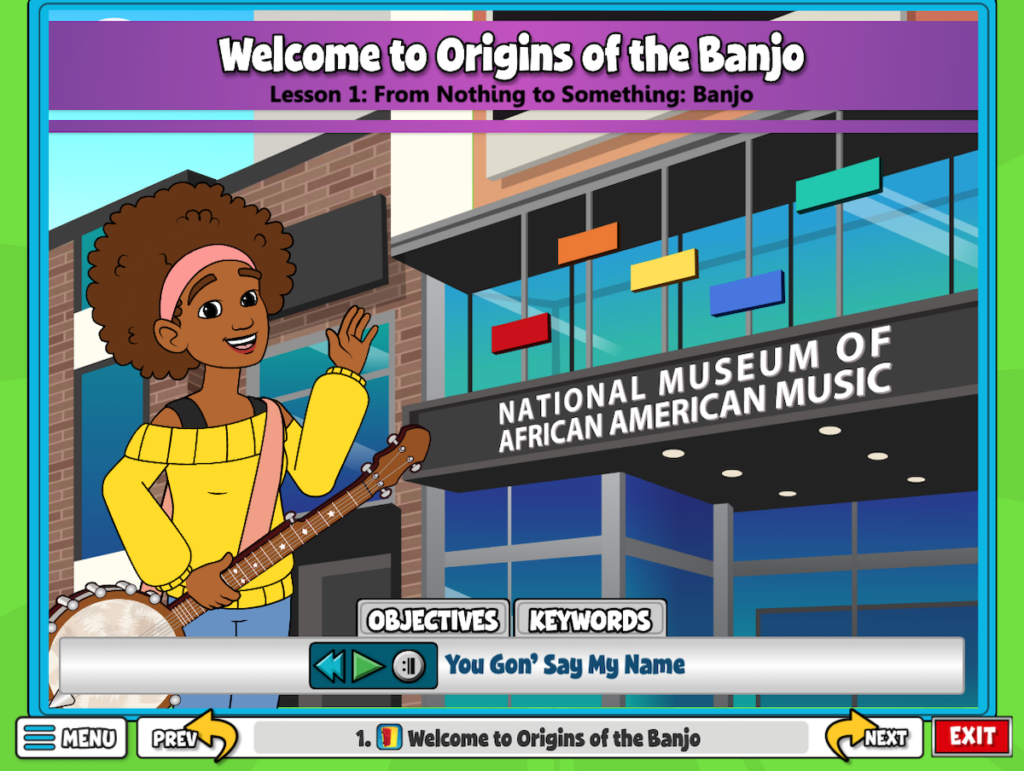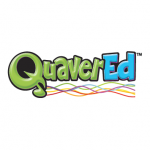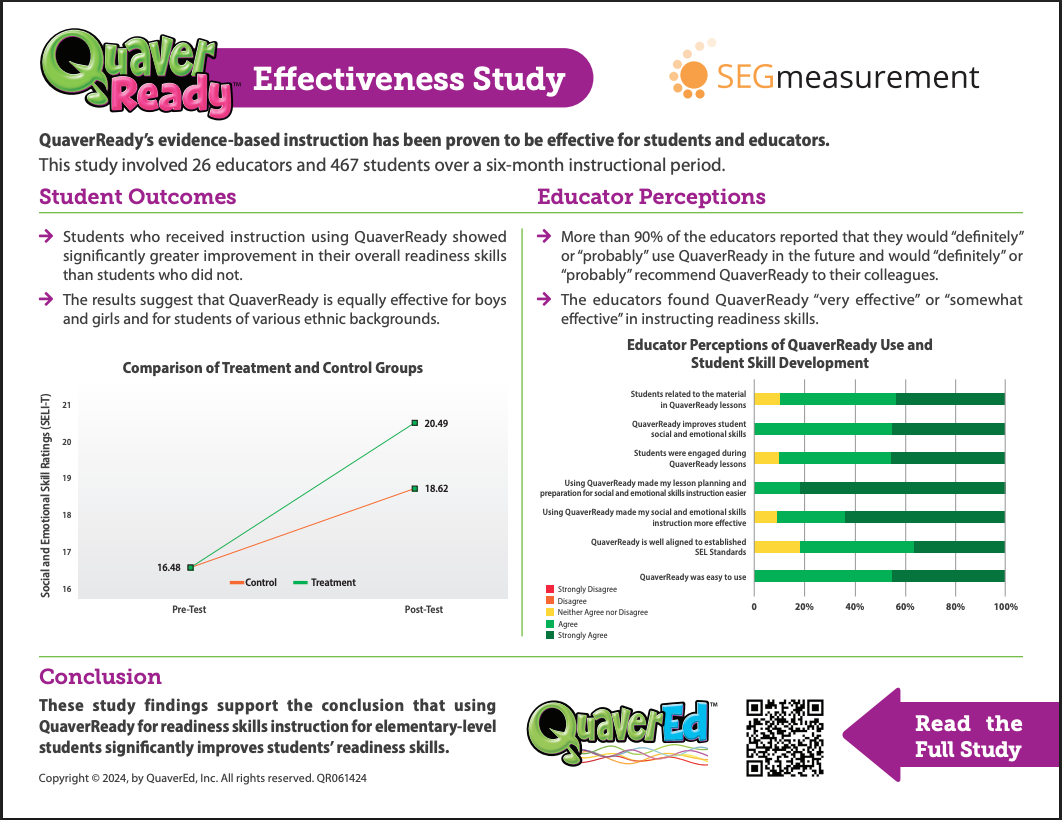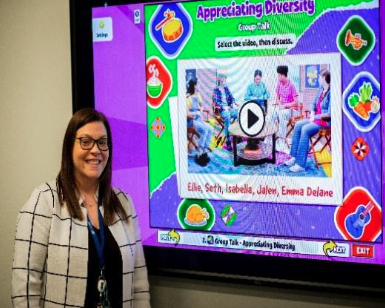Opening During A Pandemic, Nashville’s Museum Of African American Music Turns To A Virtual Curriculum
QuaverEd is proud to announce a partnership with the National Museum of African American Music. Read the story below.
***

This slide, from a new online music curriculum, was created through a Nashville-centric partnership between the National Museum of African American Music and education tech company QuaverEd.
The pandemic is the latest reason the long-awaited National Museum of African American Music is delaying its opening in downtown Nashville. But in the meantime, the museum has been working on a shareable curriculum that is suddenly arriving at just the right time.
It’s both virtual and topical — a whole series of online lessons built to highlight just how foundational Black music has been for America’s soundtrack.
To pull it off, the museum went just up the street. Its partner is Nashville-based QuaverEd, an educational tech company that already has some 14,000 teachers worldwide using its materials.
The company’s courses are packed with a blend of sound, theater and technology.
All of this is accomplished over a campus of buildings on Music Row. The spaces, these days, are quieter than their lessons.
On a recent day, the main building’s lobby is empty other than a single masked employee. The few creatives still on site are pecking away quietly, separated across rooms or distanced around corners from each other.
In a large conference room, QuaverEd co-founder Graham Hepburn and his team are reviewing prototype slides for the museum’s lessons. The first one shows the basic structure of a banjo.
“So at the moment, we’re just clicking around the banjo. We can click on the head, stalk, on the neck and it reveals what those parts are,” Hepburn says, “but not only that, we can also listen to the banjo as well. Here we go.”
On cue, a cheerful tune rings out.
These slides for the museum focus on seven instruments that are fundamental to the American sound. One of the first courses planned for release is the banjo.
It’s often thought of as a white Appalachian instrument — the definitive instrument in bluegrass music, at that. But the ancestor of the modern banjo “actually made its way here through enslaved people,” says Valerie Diaz Leroy. She’s a former music educator who’s now the research and pedagogy specialist at QuaverEd.
“If you click on this first picture, that’s a watercolor called ‘The Old Plantation’ recently discovered to have been painted by John Rose, who was a slave owner,” she says, joining her team remotely via video conference. “I’ll get a little bit geeky here because I love the banjo, but what historians love so much about this is the banjo player is playing in the style that was traditional in Africa. So this is proof of a connection to these instruments.”
The museum’s curriculum, called “From Nothing to Something,” merges music education and museum pieces. And the content goes a step deeper than your average music class. The origin stories of the instruments open conversations ranging from modern racism to the intersection of historical slavery and Black music.
“Off of this page,” Diaz Leroy says, “we’re going to ask students to look at their own traditions so they relate their experiences to what they’re learning with regards to the instrument in history.”
A long time coming, but now just in time
The National Museum of African American Music is a museum that hasn’t quite existed yet.
It’s been in the works for nearly 20 years, facing numerous challenges that have delayed the opening of a brick-and-mortar location.
In the meantime, though, its leaders kept pushing forward — educating the public, in person, about the foundational importance of Black musicians within American music.
The pandemic has caused further changes, says Tamar Smithers, director of education and public programs.
“We’ve transitioned a number of our programs from in-person to the digital-virtual sense and what we have found is that that has provided us an opportunity to reach broader audiences outside of Nashville and Middle Tennessee.”
She says the partnership with QuaverEd was the best option to make their lessons more accessible.
Launch of the museum’s virtual units — about the percussive spoons and the banjo — is set for later this month. The long-awaited ribbon cutting, which was on the calendar for Labor Day, has been pushed off. But the building should still be complete this fall.
Smithers says that even once they have a street address — and a prominent one, at the Fifth + Broadway complex downtown — the team will continue taking lessons out to the community.
“We are a museum without walls now, and we will be a museum without walls still when we open,” Smithers says. “I can imagine that on that opening day, there will not be a dry eye in the building. I’m getting chills and goosebumps now just thinking about it.”
It’s just a little bit of serendipity that the partnership with QuaverEd is coming together now. New remote learning options that focus on Black history and the backbone of American music? In many ways, this is exactly the season for that.
Editor’s note: QuaverEd is a financial supporter of Nashville Public Radio.
***
Article originally published by Nashville Public Radio on August 13th, 2020


